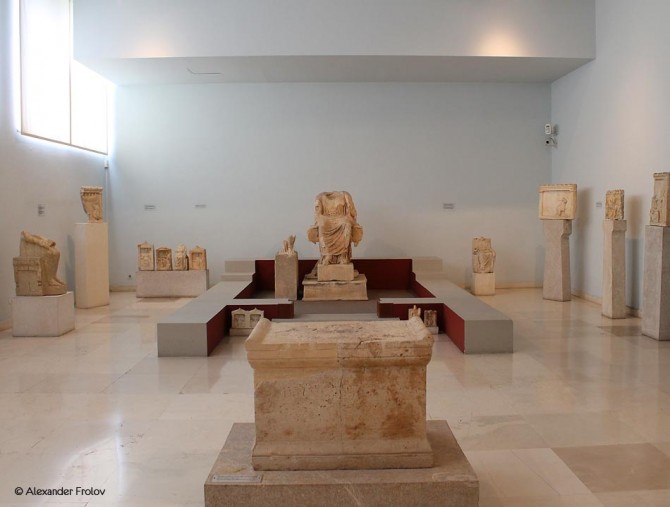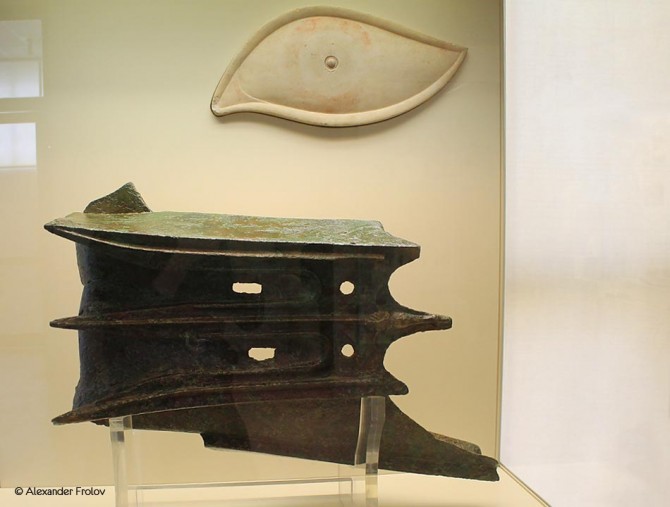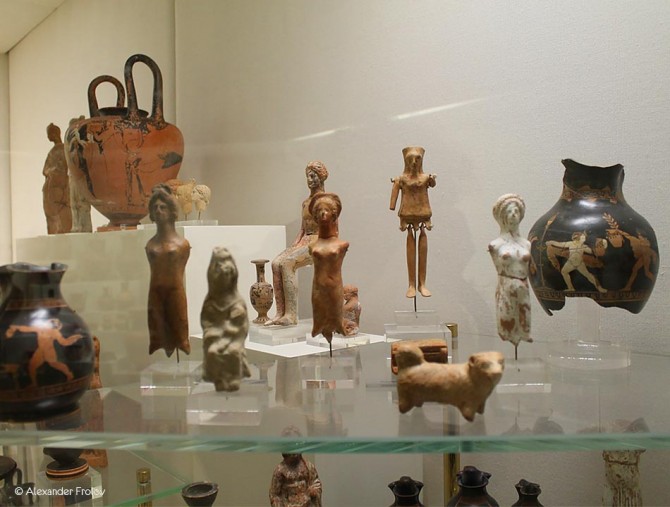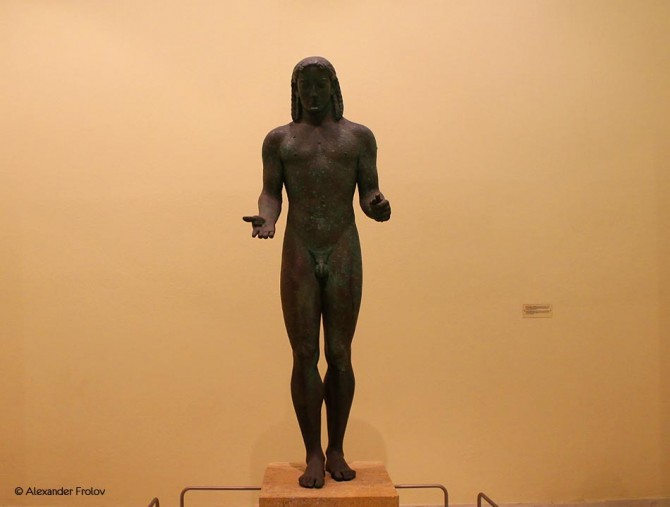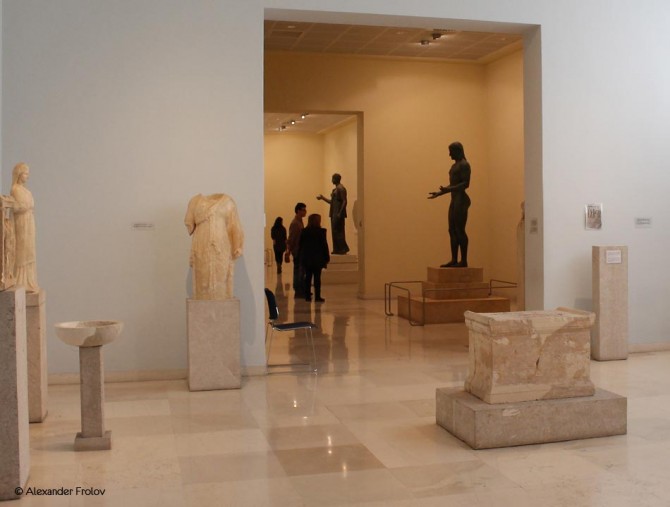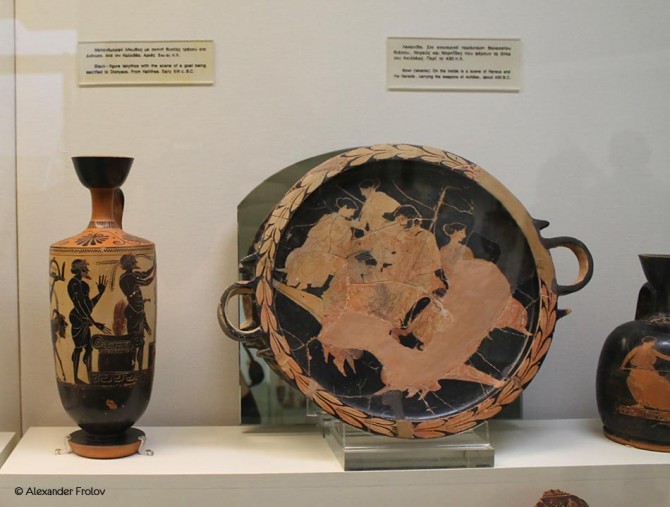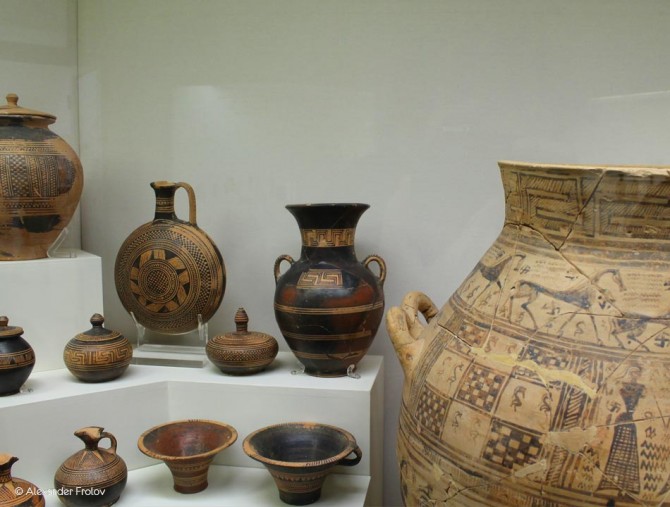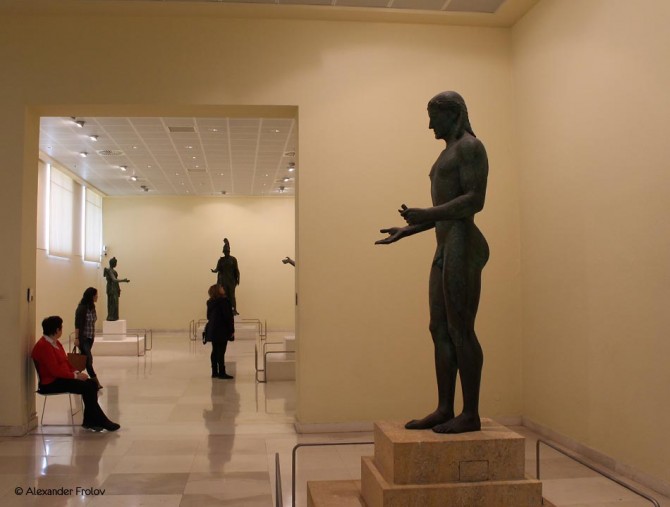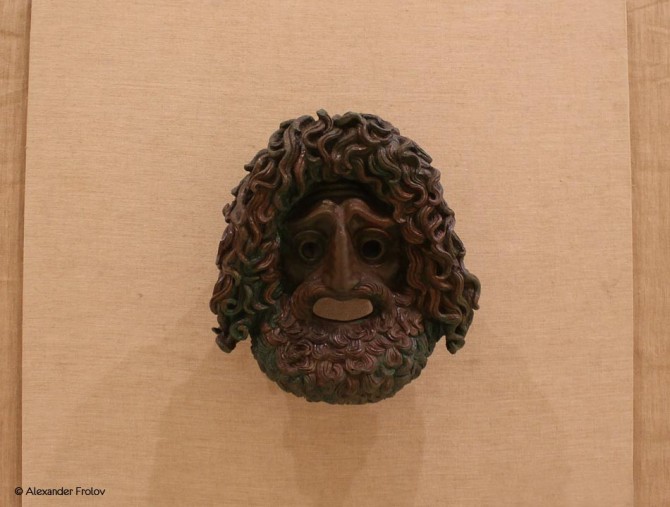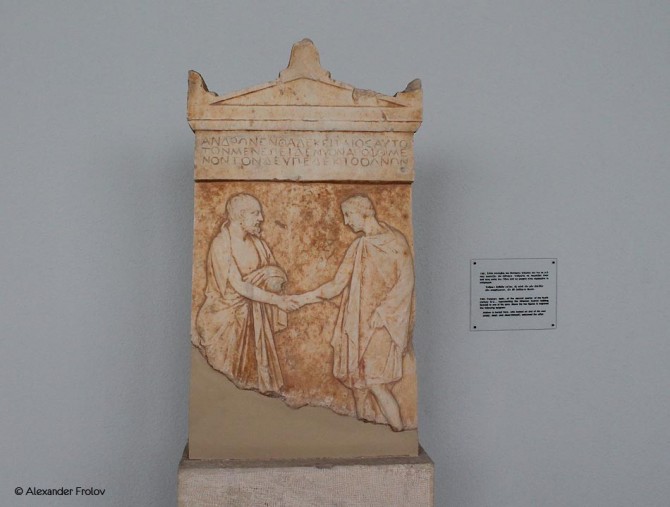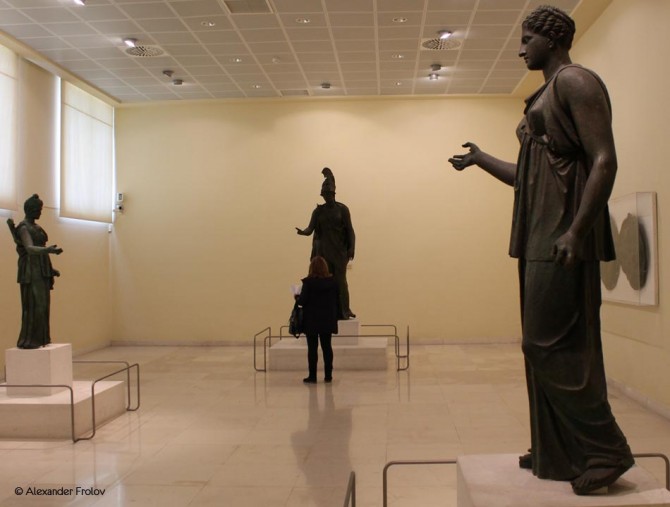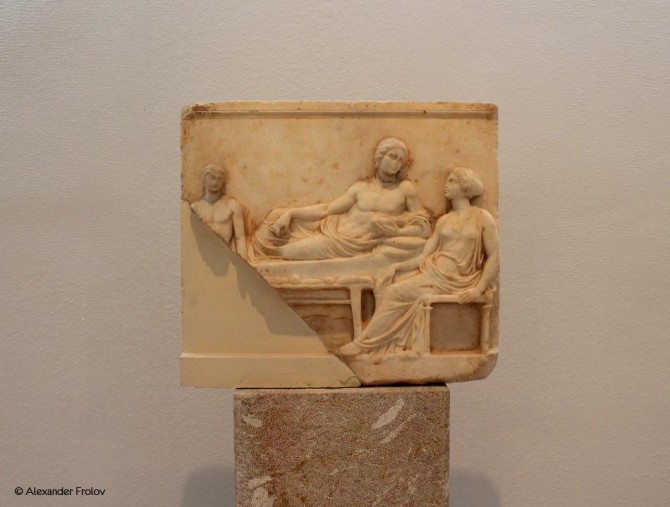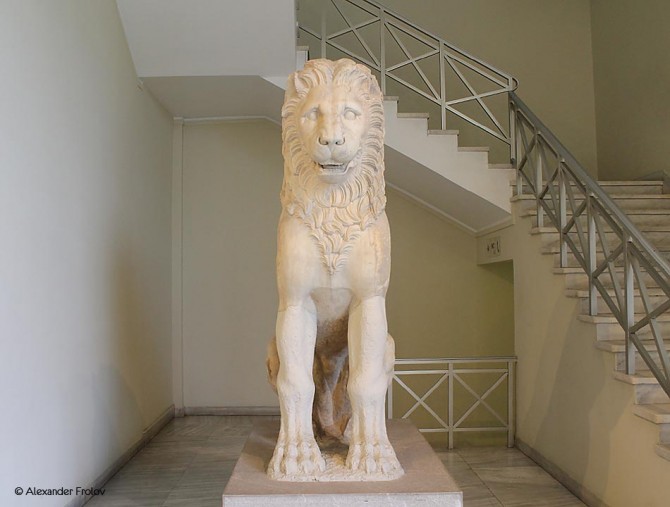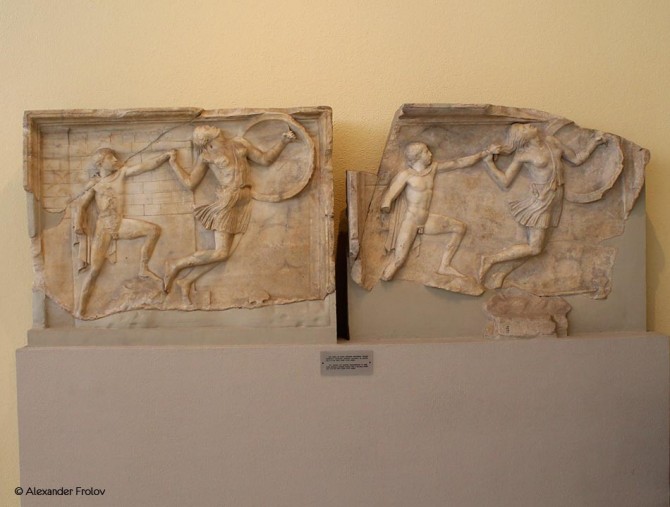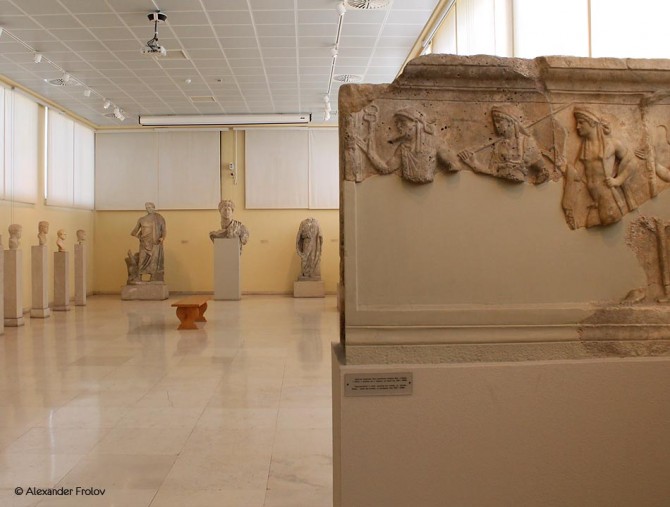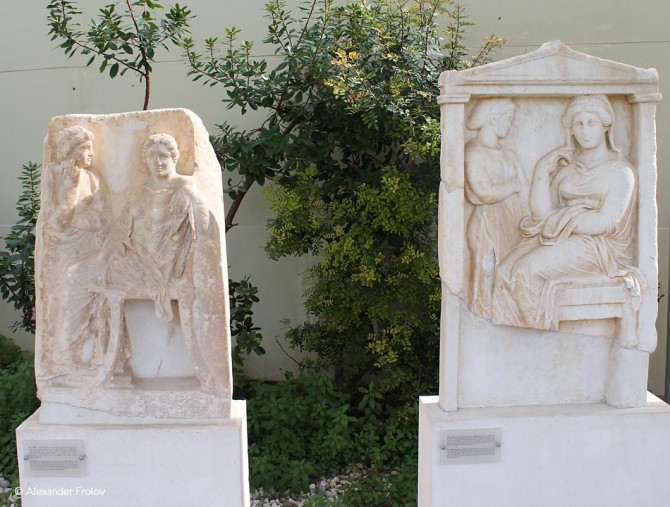Археологический музей Пирея
Археологический музей был открыт в 1935 году, а в 1981 году музей переехал в новое современное двухэтажное здание. Экспозиция размещена в десяти выставочных залах и разделена по тематикам. В подвале здания находится лаборатория и хранилище музея. Старое здание сегодня используется в качестве складских помещений.
Артефакты, представленные в музее, были найдены в городе Пирее, в прибрежных районах Аттики и на островах Саронического залива, а некоторые экспонаты были подняты с морского дна. Большую часть реликвий музея составляют разнообразные скульптуры. Особый интерес представляют бронзовые статуи в залах 3 и 4, найденные в порту Пирея в 1959 году во время ремонтных работ. Это - статуя Аполлона (530-520 годы до н.э.), две статуи богини Артемиды и одна богини Афины. Здесь же находится известная скульптура Кибелы (Матери богов) из храма в Мосхато. Они расположены в залах 6, 7 и 8. Отдельное место в экспозиции занимают коллекция скульптурных надгробий, различные находки из погребальных камер, барельефы (V и IV века до н.э.) и неоаттические рельефные таблички (II век до н.э.). Впечатляют монумент из Каллифеи в виде миниатюрного храма (4 века до н.э.) и останки святилища Зевса в Парните.. В музее также экспонируется внушительная коллекция керамики, разнообразная бытовая утварь, музыкальные инструменты и прочие мелочи. Например, счетчик для продажи жидкостей и список товаров с древнего рынка.
Заканчивается экскурсия портретами римского и эллинистического периодов, в залах 9 и 10.
Рядом с музеем при археологических раскопках были обнаружены руины древнего Театра Зеа (II век до н.э.). Сегодня этот театр своего рода продолжение экспозиции музея, только под открытым небом.
Также в музее проводятся лекции и прочие образовательные мероприятия.
Как добраться до Археологического музея Пирея:
- на метро, станция Пиреос, далее на атобусе 17 или 20. Можно и пешком
Адрес музея: ул. Харилау Трикупи, 31
Часы работы: 8:00-15:00 ежедневно, кроме понедельника
Цена билета: 3 евро, 2 евро (льготный)
Фото и текст: Александр Фролов
The Archaeological Museum of Piraeus
Piraeus in the antiquity was the naval dockyard of ancient Athens and one of the biggest commercial centers in Mediterranean. So it goes without saying that the Archaeological Museum of Piraeus is one of the most interesting of its kind in Greece. The kind of its exhibits, coming mainly from the surrounding area of Piraeus and Attica beach, in combination with the chronological periods that they cover, from the Mycenaean up to the Roman era, are representative of the peculiarity of the composition of the population and history of Piraeus.
The building of the Archaeological Museum of Piraeus, to begin with, has two stores and surrounds from its west and south side the Hellenistic Theater of Zea. In its 10 halls houses the permanent collection with archaeological findings from the areas of Piraeus, Kallithea, Moschato, the Attica Beach up to Varkiza, the islands of the Argosaronic Gulf and Kythira, and two notable private collections.
The main sections of the exhibition are: “The ancient Piraeus as a naval station and commercial center” in the vestibule floor, with features exhibits the metrological relief which was found at Salamis, the counter for the sale of liquids and a list of the Market. You will also see military items, such as a rare bronze piston of trireme, a marble eye of trireme and an stone anchor which was found in Zea, as well as objects from the religious life in Attica, derived from the archaic sanctuary of Zeus at Parnitha, the sanctuary of Artemis Mounichia, along with the rare devotional figurines and the small objects from the Minoan sanctuary of Kythira.
“The Pottery and Private Life” are exposed in the Room 2 of the floor, with main exhibits vases, jewelry, weapons, gadgets, musical instruments excavated in Salamis, Piraeus and Attica Beach as well as offerings from the Mycenaean sanctuary of Methana.
“The bronze statues of Piraeus” are presented in the Rooms 3 and 4 of the floor and they are the most impressive and important exhibits of the museum. They are four big statues (representing Apollo, Athena and Artemis) and a tragic mask, all found near the port of Piraeus.
“The Religious Life” is the theme of the Room 5 of the floor, which represents a typical sanctuary of the classical period, in the center of which there is the small temple with the statue of Cybele, which was found in Moschato.
“The Morphological evolution of the funerary monument” is developed in the Room 6 of the floor and the Rooms 7 and 8 of the ground floor. What stands out among these impressive and informative exhibits are the famous monument of Kallithea, the colossal lion of Moschato and the column of Pancharous.
The tour in the museum ends with the section “The plastic of the Hellenistic and Roman period” which is presented in the rooms 9-10 of the groundfloor, housing statues from the classical period and Roman portraits.
The Archaeological Museum of Piraeus, 31 Charilaou Trikoupi street, PIraeus. Bus lines 17 and 20, from the Piraeus Metro Station. Visiting hours: 8:00-15:00. Closed on Mondays. Ticket prices: (Full) 3 euros, (Reduced) 2 euros.
Τext: Marilou Pantazi

